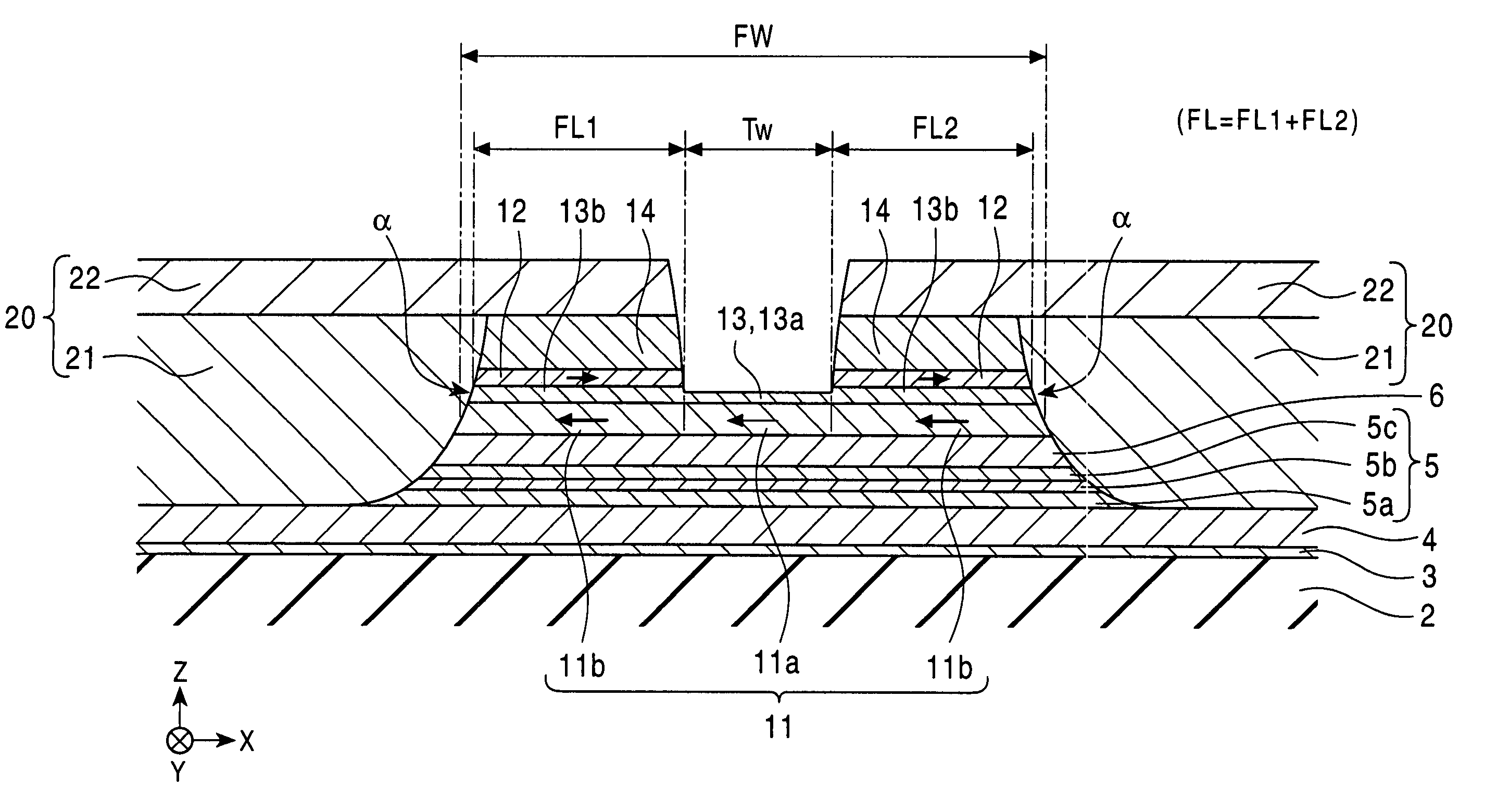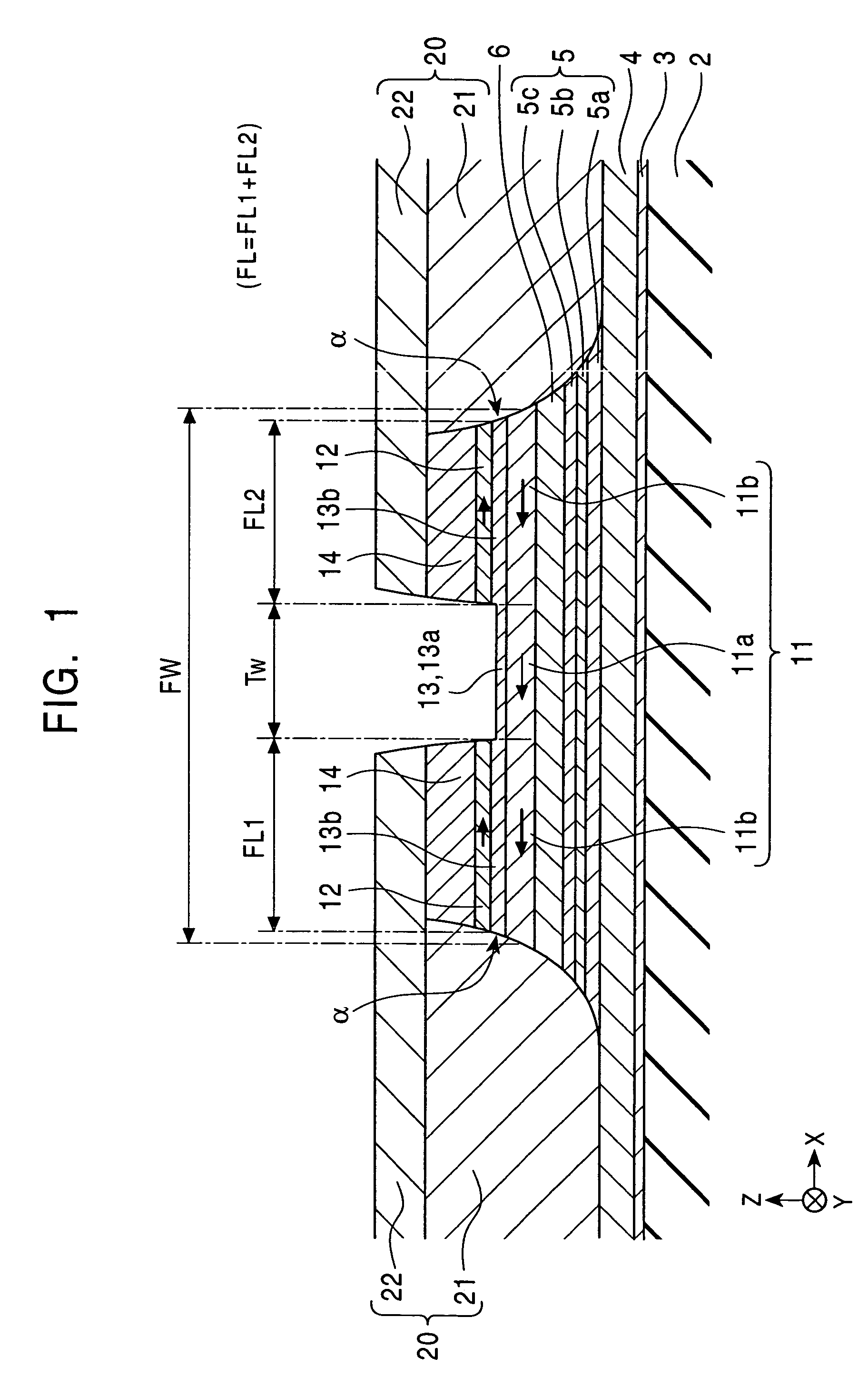Giant magnetoresistive element
a magnetoresistive element and giant magnet technology, applied in the field of giant magnetoresistive elements, can solve the problems of difficult to meet the requirements of a higher recording density, the probability of the entire track region becoming a dead zone, and the inability to increase the sn ratio, so as to achieve the effect of reducing the resistance of the element and high output sensitivity
- Summary
- Abstract
- Description
- Claims
- Application Information
AI Technical Summary
Benefits of technology
Problems solved by technology
Method used
Image
Examples
Embodiment Construction
[0042]The present invention will be described below with reference to the drawings. In each of the drawing, the X direction coincides with the track width direction, the Y direction coincides with the direction of a leakage magnetic field from a recording medium, and Z direction coincides with the movement direction of the recording medium and the lamination direction of layers constituting a giant magnetoresistive element.
[0043]FIG. 1 is a schematic sectional view showing the structure of a giant magnetoresistive (GMR) element 1 according to a first embodiment of the present invention, as viewed from a surface facing the recording medium. The GMR element 1 is used for, for example, a thin film magnetic head of a hard disk device, for detecting a leakage magnetic field from the recording medium by utilizing a GMR effect.
[0044]The GMR element 1 is formed on a lower gap layer 2 comprising an insulating material such as alumina (Al2O3) or the like. The GMR element 1 comprises a seed la...
PUM
| Property | Measurement | Unit |
|---|---|---|
| RKKY coupling energy | aaaaa | aaaaa |
| giant magnetoresistive | aaaaa | aaaaa |
| antiferromagnetic | aaaaa | aaaaa |
Abstract
Description
Claims
Application Information
 Login to View More
Login to View More - R&D
- Intellectual Property
- Life Sciences
- Materials
- Tech Scout
- Unparalleled Data Quality
- Higher Quality Content
- 60% Fewer Hallucinations
Browse by: Latest US Patents, China's latest patents, Technical Efficacy Thesaurus, Application Domain, Technology Topic, Popular Technical Reports.
© 2025 PatSnap. All rights reserved.Legal|Privacy policy|Modern Slavery Act Transparency Statement|Sitemap|About US| Contact US: help@patsnap.com



